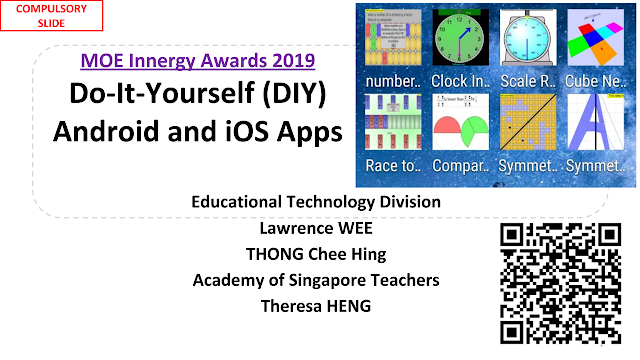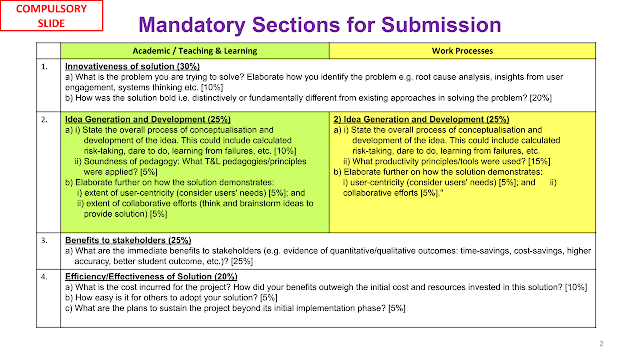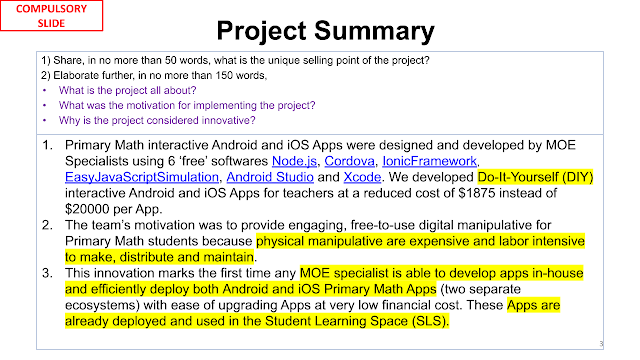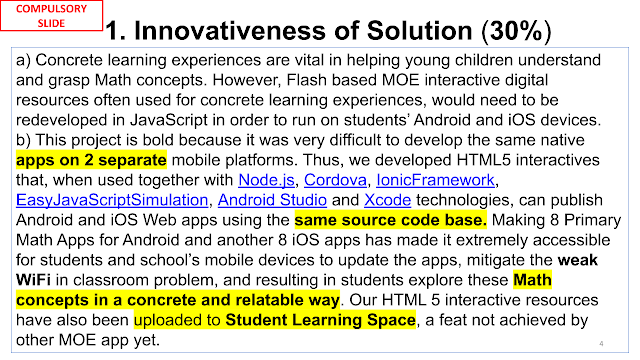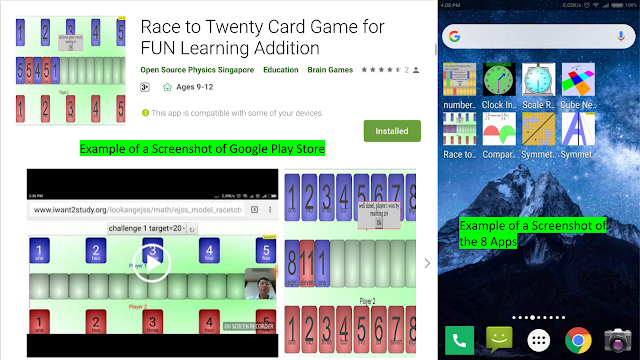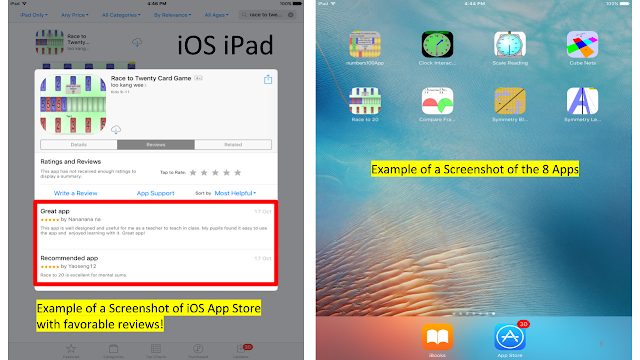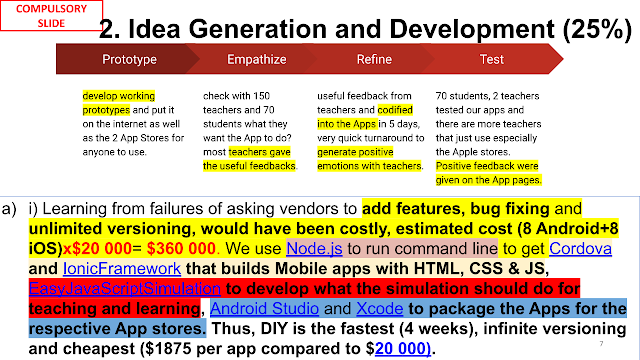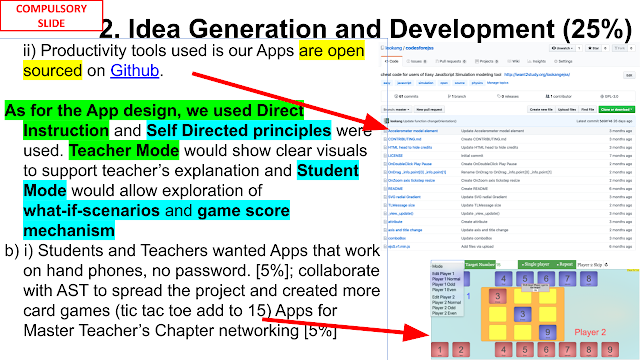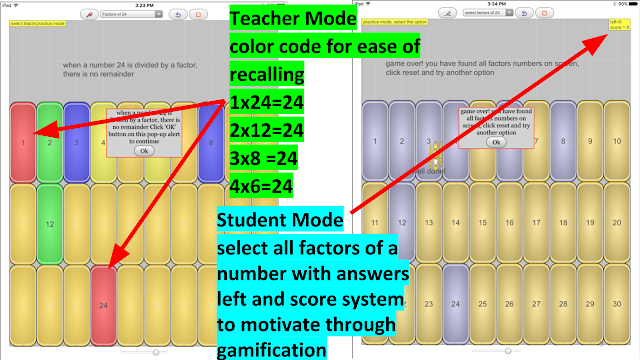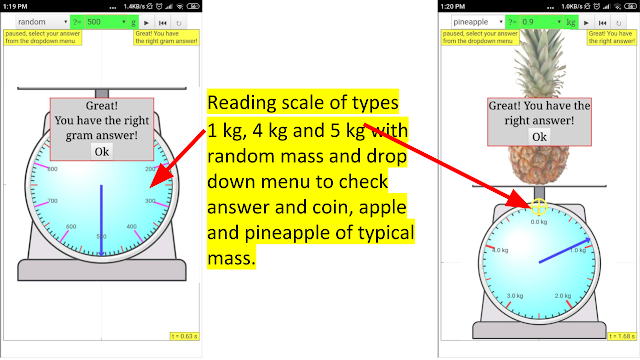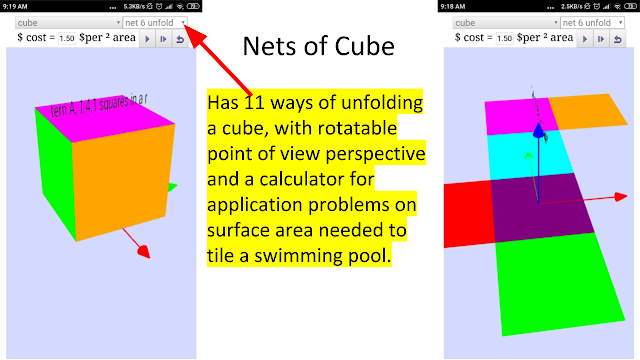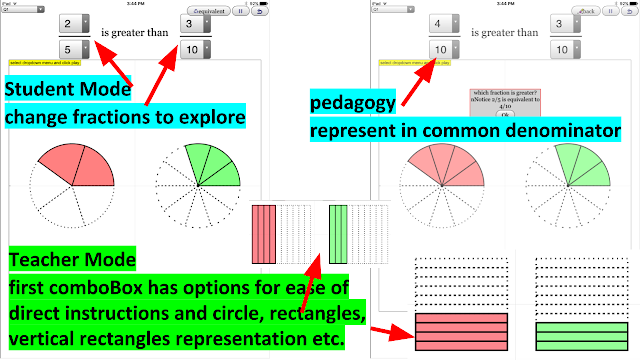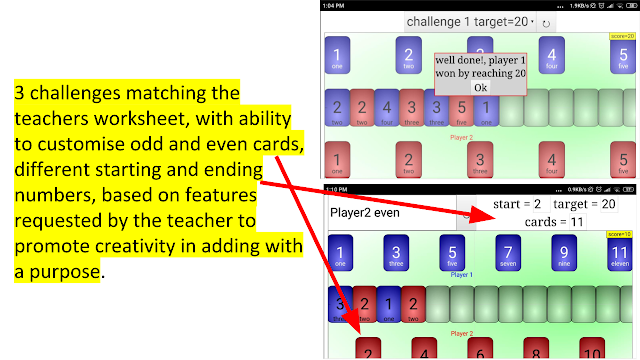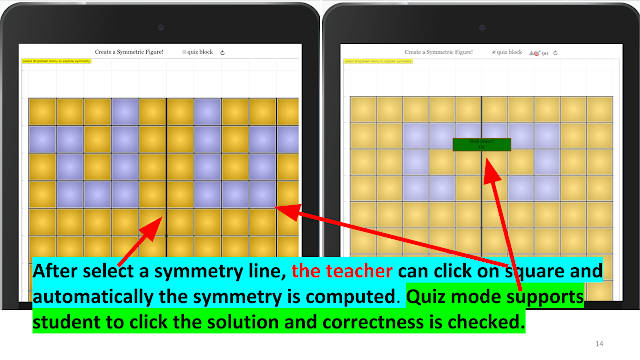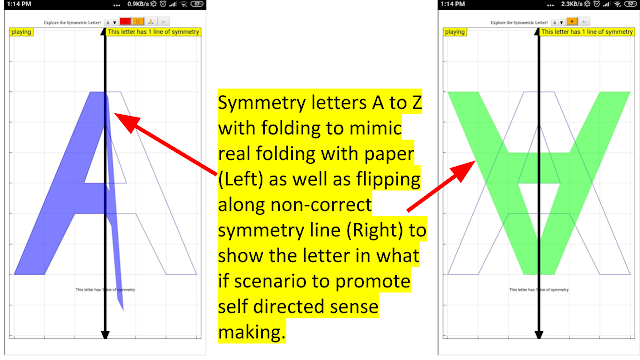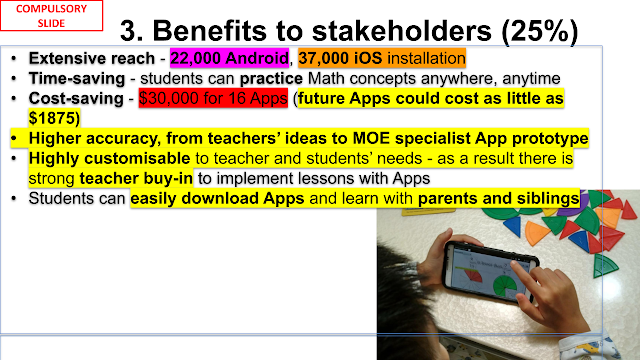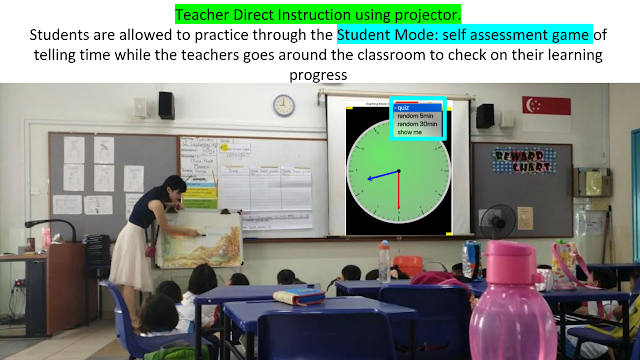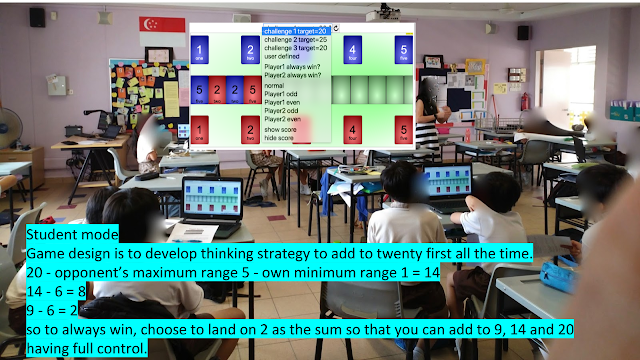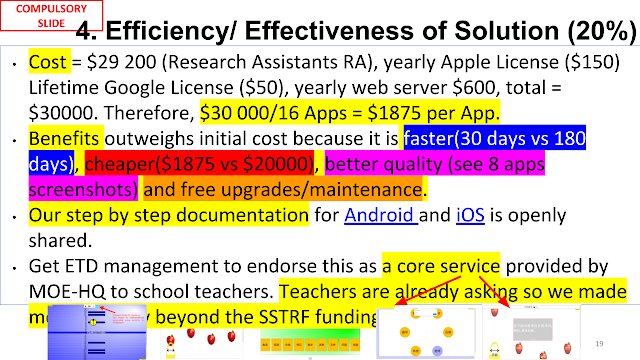sharing our slides so that you can learn from what we do and why we do it.
https://docs.google.com/presentation/d/1d3yQdvcnPu4W0vKv3qpIwwtCbfuntZB1UpdxA2AA4wM/edit#slide=id.p1
1. Introduction:
This briefing document summarizes the main themes and important aspects of the "Bronze Innergy Award 2019 Submission Do-It-Yourself (DIY) Android and iOS Apps" by Open Educational Resources / Open Source Physics @ Singapore. The information is derived from the organization's website, specifically the page detailing their award submission and related resources. The submission appears to highlight their work in creating and sharing open educational resources, particularly interactive simulations and DIY app development for educational purposes, focusing heavily on physics and mathematics.
2. Main Themes:
- Open Educational Resources (OER): The core theme revolves around the creation and sharing of OER. The website explicitly states "Open Educational Resources / Open Source Physics @ Singapore" in its title and throughout the content. The submission itself falls under this umbrella, with the organization "sharing our slides so that you can learn from what we do and why we do it." This commitment to openness is central to their mission.
- Interactive Simulations for Learning: A significant portion of the website is dedicated to interactive simulations, primarily built using JavaScript and HTML5. These simulations cover a wide range of topics in physics, mathematics, and even some English language concepts. Examples include "SLS Hackathon by Maria Stella Primary on Cloze Passage JavaScript Simulation Applet HTML5" and numerous physics simulations under the "PICUP" (Partnership for Integration of Computation into Undergraduate Physics) banner. These simulations aim to provide engaging and visual learning experiences.
- Do-It-Yourself (DIY) App Development: The title of the award submission explicitly mentions "Do-It-Yourself (DIY) Android and iOS Apps." This suggests that a key component of their work involves empowering educators and students to create their own mobile applications, likely utilizing the open-source resources and simulations they provide. The shared presentation slides (linked as "sharing our slides so that you can learn from what we do and why we do it.") likely detail this DIY aspect.
- Student Learning Space (SLS) Integration: Several listed projects are explicitly linked to the "SLS Hackathon," indicating a focus on developing resources that can be integrated with Singapore's national Student Learning Space platform. Examples include numerous "SLS Hackathon by [School Name] on [Topic] JavaScript HTML5 Applet Simulation Model" entries. This highlights their contribution to enhancing digital learning within the national curriculum.
- Teacher Empowerment and Collaboration: The involvement of various schools (Maria Stella Primary, YPS, PRSS, Yumin Primary, etc.) in the "SLS Hackathon" suggests a collaborative approach where teachers and students are actively involved in creating educational resources. Sharing their work and methodologies ("sharing our slides so that you can learn from what we do and why we do it.") further emphasizes teacher empowerment and knowledge sharing.
- Focus on STEM (Science, Technology, Engineering, and Mathematics): The sheer volume and variety of physics and mathematics simulations clearly indicate a strong focus on STEM education. Topics range from basic mechanics and heat transfer to more advanced concepts like quantum physics and calculus.
- Utilizing Open Source Technologies: The prevalence of JavaScript and HTML5 in the simulation titles suggests a reliance on open and web-compatible technologies, making their resources widely accessible across different devices and platforms. The mention of the "EasyJavaScriptSimulations Library" and its Creative Commons license further reinforces their commitment to open source.
- Recognition and Impact: The Bronze Innergy Award itself signifies recognition of their innovative contributions to education. The extensive list of interactive resources and the high number of "Articles View Hits" (10,277,141) suggest a significant reach and impact of their OER.
3. Most Important Ideas and Facts:
- Award Recognition: The Bronze Innergy Award 2019 acknowledges the innovative nature of their DIY app development approach and the value of their open educational resources.
- Extensive Collection of Interactive Resources: The website showcases a vast library of interactive simulations covering diverse topics in physics, mathematics, and other subjects. This highlights the depth and breadth of their OER contributions.
- DIY App Creation Focus: The award submission title emphasizes the empowerment of users to create their own Android and iOS apps, suggesting a user-friendly approach to mobile learning content development. The presentation slides (linked) likely provide crucial details on this process.
- Integration with National Learning Platform: The strong presence of "SLS Hackathon" projects demonstrates a direct contribution to enhancing digital learning within Singapore's Student Learning Space.
- Community Engagement: The involvement of numerous schools and the sharing of resources indicate a collaborative and community-driven approach to OER development and dissemination.
- Emphasis on Open Licensing: The mention of the Creative Commons Attribution-Share Alike 4.0 Singapore License underscores their commitment to open access and the sharing of their educational materials.
4. Key Quotes:
- From the main description of the award submission: "sharing our slides so that you can learn from what we do and why we do it." This directly highlights their intention to share their methodologies and empower others.
- The website title itself: "Open Educational Resources / Open Source Physics @ Singapore" clearly defines their core mission and focus.
5. Conclusion:
The Bronze Innergy Award 2019 submission by Open Educational Resources / Open Source Physics @ Singapore underscores their significant contributions to the educational landscape through the creation and sharing of open educational resources, particularly interactive simulations and a DIY approach to app development. Their strong integration with the national Student Learning Space, collaborative engagement with educators and students, and commitment to open licensing highlight their dedication to enhancing learning experiences and empowering the educational community. The extensive collection of resources and their widespread usage further demonstrate the impact and value of their work. To gain a deeper understanding of their DIY app creation process, reviewing the linked presentation slides would be beneficial.
DIY Android and iOS Apps Study Guide
Quiz
- What was the "Bronze Innergy Award 2019 Submission" specifically about, based on the provided text?
- What types of educational resources are highlighted on the "Open Educational Resources / Open Source Physics @ Singapore" website? Provide at least two examples from the text.
- The submission involved the creation of Do-It-Yourself (DIY) apps. For which mobile operating systems were these apps intended?
- What is the significance of the "SLS Hackathon" mentioned multiple times in the text? Provide one specific example of a project that came out of this hackathon.
- Besides the award submission itself, what other resources related to the award are mentioned in the provided text?
- What programming language(s) and web technologies appear frequently in the descriptions of the interactive simulations listed on the page?
- What is the Creative Commons license mentioned at the end of the text, and what does it indicate about the use of the content?
- What are some of the subject areas, besides physics, for which interactive resources or applets have been developed, based on the listed titles? Provide at least two examples.
- The website mentions "Open Educational Resources" and "Open Source Physics." Briefly explain what each of these terms generally refers to in an educational context.
- What evidence suggests that the platform aims to support educators in creating interactive learning experiences for students?
Quiz Answer Key
- The "Bronze Innergy Award 2019 Submission" was about creating Do-It-Yourself (DIY) Android and iOS apps, as indicated by the title. The submission shared slides detailing what was done and the reasoning behind it, aiming to allow others to learn from their experience.
- The website highlights interactive resources and open-source physics simulations. Examples include JavaScript HTML5 applet simulations for topics like cloze passages, vector addition, heat transfer, and various physics phenomena.
- The DIY apps were intended for both Android and iOS operating systems, as explicitly stated in the title of the award submission.
- The "SLS Hackathon" appears to be an event where various teams and schools developed interactive educational applications or simulations, often utilizing JavaScript and HTML5. An example project includes "SLS Hackathon by Maria Stella Primary on Cloze Passage JavaScript Simulation Applet HTML5."
- Besides the submission slides, the reference link to a blog post and the numerous listed projects stemming from various "SLS Hackathons" provide additional resources and context related to the award and the work involved.
- JavaScript and HTML5 appear very frequently in the descriptions of the interactive simulations and applets, indicating that these were key technologies used in their development.
- The Creative Commons Attribution-Share Alike 4.0 Singapore License indicates that the content can be shared and adapted, even commercially, as long as attribution is given and any derivative works are shared under the same license.
- Besides physics, examples of other subject areas include English Language (Cloze Passage, Sentence Scrambler), Mathematics (Vector Addition, Bubble Sort, Geometry, Calculus), Chemistry (Chemical Bonding), Economics (Production Possibility Curve), and Computer Science (Sorting Algorithms).
- Open Educational Resources (OER) are teaching, learning, and research materials that are freely available to anyone at little or no cost. Open Source Physics typically refers to physics-related educational materials, including simulations and software, for which the source code is freely available and can be modified and shared.
- The website provides numerous examples of interactive simulations and applets designed for various subjects and grade levels, many originating from educational initiatives like the "SLS Hackathon." Additionally, the sharing of slides from their award submission suggests a desire to help other educators learn from their DIY app creation process.
Essay Format Questions
- Discuss the significance of DIY app development in the context of open educational resources, as exemplified by the "Bronze Innergy Award 2019 Submission." What are the potential benefits and challenges of this approach for educators and learners?
- Analyze the variety of interactive resources listed on the "Open Educational Resources / Open Source Physics @ Singapore" website. What does this diversity suggest about the scope and goals of the project?
- Examine the role of hackathons, such as the "SLS Hackathon," in fostering innovation and the creation of educational technology tools. Use specific examples from the provided text to support your analysis.
- Based on the information provided, evaluate the impact and reach of the "Open Educational Resources / Open Source Physics @ Singapore" project. What indicators suggest its influence on education, particularly in Singapore?
- Consider the use of JavaScript and HTML5 in the development of the listed interactive simulations. What are the advantages of using these technologies for creating web-based educational resources?
Glossary of Key Terms
- Open Educational Resources (OER): Teaching, learning, and research materials in any medium – digital or otherwise – that reside in the public domain or have been released under an open license, permitting no-cost access, use, adaptation, and redistribution by others with no or limited restrictions.
- Open Source Physics: An initiative focused on providing freely available and modifiable physics education resources, often including simulations with accessible source code.
- Do-It-Yourself (DIY) Apps: The creation of software applications by individuals with limited formal programming training, often utilizing user-friendly tools and platforms.
- SLS (Student Learning Space): A national online learning platform used in Singaporean schools to support teaching and learning.
- Hackathon: An event, typically lasting a few days, in which a large number of people meet to engage in collaborative computer programming and other forms of hardware and software development.
- JavaScript: A high-level, often just-in-time compiled programming language that conforms to the ECMAScript specification. It is a scripting language that enables interactive web pages and is an essential part of web applications.
- HTML5: The latest evolution of the standard that defines HTML (Hypertext Markup Language). It describes the structure of web pages and includes features for multimedia, graphics, and interactive elements.
- Applet: A small application, typically written in Java or other programming languages, that runs within another application, such as a web browser. In this context, it often refers to interactive simulations embedded in web pages.
- Simulation: A computer-based model that imitates a real-world system or process, often used in education to allow learners to explore and experiment with different variables.
- Creative Commons License: A type of public copyright license that enables the free distribution of an otherwise copyrighted work. The specific license mentioned, Attribution-Share Alike 4.0 Singapore License, requires attribution to the original creator and that any derivative works are licensed under similar terms.
Reference:
https://weelookang.blogspot.com/2019/07/innergy-award-2019-do-it-yourself-diy.html
Frequently Asked Questions: Open Educational Resources / Open Source Physics @ Singapore
1. What is the primary focus of the "Open Educational Resources / Open Source Physics @ Singapore" project? The project centers on creating and sharing free and openly accessible interactive resources, particularly simulations and applets, primarily focused on physics and mathematics education in Singapore. It aims to enhance learning through engaging and hands-on digital tools that can be used by students and educators.
2. What types of interactive resources are available through this project? The project offers a wide variety of interactive resources, predominantly JavaScript and HTML5-based simulations and applets. These cover diverse topics within physics (like kinematics, dynamics, electromagnetism, waves, optics, and thermodynamics), mathematics (including algebra, geometry, calculus, and statistics), and even some cross-curricular applications (such as games for English and Chinese language learning).
3. What is the "SLS Hackathon" mentioned frequently in the source? The "SLS Hackathon" refers to a series of events where students, likely from various schools (e.g., Maria Stella Primary, Yumin Primary, Admiralty Primary, Crest Secondary, Woodlands Secondary, YIJC, EJC), participate in creating interactive learning resources for the Singapore Student Learning Space (SLS). These hackathons foster student innovation and the development of educational tools.
4. Are the resources developed by this project intended for a specific educational level? While many resources appear to be aligned with the Singaporean curriculum (as indicated by mentions of SLS and specific school levels like Primary and Secondary), the diverse range of topics and complexity suggests that the resources could be beneficial for various educational levels, from primary school to junior college (pre-university) and potentially even introductory university physics and mathematics.
5. Is the "Open Educational Resources / Open Source Physics @ Singapore" project recognized for its contributions? Yes, the project has received recognition, as evidenced by the "Bronze Innergy Award 2019 Submission" mentioned in the title and the inclusion of "Awards and Nominations" in the breadcrumbs. This suggests that their work in developing innovative educational resources has been acknowledged.
6. Are these interactive resources accessible on different devices and platforms? Given the prevalent use of HTML5 and JavaScript for the simulations and applets, it is highly likely that these resources are designed to be cross-platform and accessible on various devices with a web browser, including desktops, laptops, tablets, and potentially smartphones, without the need for specific software installations.
7. Can educators learn from the project's development process? Yes, the project actively shares its experiences and methodologies. The mention of "sharing our slides so that you can learn from what we do and why we do it" and records of meetups and workshops (e.g., "20190219 YIJC-CPDD-ETD meetup," "20180130 Smart Phone Physics Workshop NIE-CPDD-ETD") indicate a commitment to sharing knowledge and best practices with other educators.
8. What is the licensing for the resources provided by this project? The content is licensed under the Creative Commons Attribution-Share Alike 4.0 Singapore License. This means that the resources can be used, adapted, and shared, provided that attribution is given to the original creators and any derivative works are also shared under a similar license. There is a separate note regarding commercial use of the EasyJavaScriptSimulations Library, requiring users to read their specific license and contact them directly.

